2014
Nanomedicine: A Soft Matter Perspective
by Dipanjan Pan
(no cover picture yet)
- Hardcover: 352 pages
- Publisher: CRC Press; 1 edition (March 15, 2014)
- Language: English
- ISBN-10: 1466572825
- ISBN-13: 978-1466572829
Abstract
This book provides a broad introduction to soft matters for nanomedicinal applications, with a deeper discussion of the individual modalities for molecular imaging. It includes a general introduction to the opportunities provided by this technology in chemistry, materials, biology and nanomedicine. It is designed and written with the perspective that anyone, with or without previous knowledge of nanotechnology, would benefit.
Horizons in Clinical Nanomedicine
(no cover picture yet)
by Varvara Karagkiozaki & Stergios Logothetidis
- Hardcover: 400 pages
- Publisher: Pan Stanford Publishing (January 31, 2014)
- Language: English
- ISBN-10: 9814411566
- ISBN-13: 978-9814411561
Abstract
Nanomedicine — the application of nanotechnology to health sciences — has the potential to address many important medical problems by exploiting the improved and novel physical/chemical characteristics of nanostructured materials and devices. This book provides a comprehensive overview on the forefront developments of nanotechnology in various domains of clinical medicine, such as cardiology, oncology, pharmacology, immunology, dermatology, virology, hematology, orthopaedics, embryology and congenital defects, dentistry, and tissue engineering. It also discusses the toxicology aspects of the engineered nanomaterials.
Nanomedicine: Principles and Practices
(no cover picture yet)
by Raj Bawa & Joseph D. Bronzino & Donald R. Peterson
- Hardcover: 300 pages
- Publisher: CRC Press; 1 edition (January 15, 2014)
- Language: English
- ISBN-10: 1439879230
- ISBN-13: 978-1439879238
Abstract
Nanomedicine: Principles and Practices draws on material from the nanomedicine section of The Biomedical Engineering Handbook, Fourth Edition. Edited by Raj Bawa, Joseph D. Bronzino, and Donald A. Peterson, this reference brings together contributions by world-class experts in the field. Offering comprehensive treatment of the latest development and research being conducted in nanomedicine, this is a useful resource for practitioners, scientists, and researchers working in the areas of nanomedicine and nanobiotechnology as well as graduate students studying bioengineering and regenerative medicine.
The Clinical Nanomedicine Handbook
(no cover picture yet)
by Sara Brenner
- Hardcover: 408 pages
- Publisher: CRC Press; 1 edition (December 20, 2013)
- Language: English
- ISBN-10: 1439834784
- ISBN-13: 978-1439834787
Abstract
This is the first clinically oriented, high quality, comprehensive volume detailing the latest major worldwide developments in nanomedicine. Outlined by specialty area, this book highlights major advances in medical applications of nanotechnology in a way that is structurally, linguistically, and logically aligned with today’s practicing clinicians, medical researchers, and scientists. The book integrates current research, translational applications, and future projections to provide a comprehensive roadmap of the state of the science. Topics covered include radiology, cardiology, oncology, ophthalmology, surgery, dermatology, medical genetics, dentistry, and neurology.
Singularities: Technoculture, Transhumanism and Science Fiction in the 21st Century (December 15, 2013)
by Joshua Raulerson
- Hardcover: 256 pages
- Publisher: Liverpool University Press (December 15, 2013)
- Language: English
- ISBN-10: 1846319722
- ISBN-13: 978-1846319723
Abstract
Amid the seemingly exponential advancement of technology and the increasingly portentous implications of its continued development and proliferation, many futurists speculate about an imminent historical threshold when the nature of human existence will be forever changed—the Singularity. In Singularities, Joshua Raulerson mounts a wide-ranging study of the Singularity as a subject for theory and cultural studies, drawing science fiction texts into a complex dialogue with digital culture, transhumanist movements, political and economic theory, consumer gadgetry, gaming, and related areas of our high-tech postmodernity. By doing so, he shows how the Singularity greatly shapes many of our contemporary anxieties and aspirations.
Nanomedicine, Volume 5 (Frontiers of Nanoscience)
- Hardcover: 304 pages
- Publisher: Elsevier; 1 edition (November 26, 2013)
- Language: English
- ISBN-10: 0080983383
- ISBN-13: 978-0080983387
Abstract
The application of nanotechnology to medicine is revolutionizing healthcare. This book focuses on the science and engineering driving this revolution, the fabrication of nanostructures for diagnosis and therapy, advanced imaging at the molecular scale and the application of nanoscale physics to bring novel solutions to the detection and treatment of disease. Particular emphasis is placed on hard nanotechnology (e.g. quantum dots, carbon nanotubes, silica) rather than the soft nanotechnology of molecular chemistry.
- Presents an overview the subject for physical scientists and engineers
- Specific focus on new technologies that have entered the medical arena
- Introduces applications and specific case studies by clinical researchers
Nanomedical Device and Systems Design: Challenges, Possibilities, Visions
- Hardcover: 783 pages
- Publisher: CRC Press; 1 edition (November 22, 2013)
- Language: English
- ISBN-10: 0849374987
- ISBN-13: 978-0849374982
Abstract
This unique book addresses issues pertaining to nanomedical devices and systems design in terms of challenges, possibilities, and future vision. It examines what it takes to design, fabricate, and functionalize autonomous micron-scale, robotic medical devices (having nanometric-scale components) and what perceived hurdles must be overcome to foster their development and implementation. The book investigates device deployment and recovery strategies, as well as protocols for their safe and failsafe operation and their efficacy when applied to an array of human maladies.
Human Biology
by Daniel D. Chiras
- Paperback: 600 pages
- Publisher: Jones & Bartlett Learning; 8 edition (November 15, 2013)
- Language: English
- ISBN-10: 1284031810
- ISBN-13: 978-1284031812
Abstract
A Thoroughly Revised and Updated Edition of an Acclaimed Human Biology Text Designed for the undergraduate, non-science major, the thoroughly updated eighth edition of Human Biology, continues to present the latest information on the structure, function, health, and disease of the human body, while maintaining the central organizational theme of homeostasis. This acclaimed text explores the world from the cellular level, followed by a look at tissues and organs, and then moves on to a discussion of humans as organisms within a complex evolutionary and ecological environment. Dr. Chiras discusses the scientific process in a thought-provoking way that challenges students to become deeper, more critical thinkers. The focus on health and homeostasis allows students to learn key concepts while also assessing their own health needs and learning how to implement a healthy lifestyle. New to the thoroughly revised and updated Eighth Edition: • Features a reorganized chapter layout so content on the circulatory system and blood are presented before the chapter on nutrition and digestion. • Moved the expanded in-chapter key concepts from the beginning to the end of each section. • Expanded the coverage of all diseases, including new information on the causes, treatment, and prevention. • Contains new information on numerous topics, including expanded coverage on nutrition and the importance of plant-based nutrients and plant sources of complete proteins, new information on the functions of the appendix, additional information on the benefits of breastfeeding, and new content on the causes and treatment of acne. • New topics added to this edition include primary cilia, hormonal control of hunger, effective treatments for insomnia, use of organs from pigs to repair damaged organs, health benefits of omega-3 fatty acids, new information on HIV infections, genetic determination of sex, natural killer cells, and many more!
Nanorobotics (ISTE)
(no cover picture yet)
by Etienne Dombre & Michael Gauthier, & Nicolas Andreff
- Hardcover: 192 pages
- Publisher: Wiley-ISTE; 1 edition (November 11, 2013)
- Language: English
- ISBN-10: 1848213719
- ISBN-13: 978-1848213715
Abstract
A promising long-term evolution of surgery relies on intracorporeal microrobotics. This book reviews the principles, methods, and scientific challenges involved in the design and control of such robots. Covering intracorporeal millirobotics, intracorporeal microrobotics, and non-contact in vitro mesorobotics, the book considers the different problems encountered with each device and describes solutions for manipulating objects and reaching targets within the body. State-of-the-art examples of devices and prototypes illustrate the benefits for surgeons and patients. Trends in nanorobotics are also discussed.
Posthumanism
- Paperback: 208 pages
- Publisher: Polity; 1 edition (November 4, 2013)
- Language: English
- ISBN-10: 0745662412
- ISBN-13: 978-0745662411
Abstract
This timely book examines the rise of posthumanism as both a material condition and a developing philosophical-ethical project in the age of cloning, gene engineering, organ transplants and implants.
Nayar first maps the political and philosophical critiques of traditional humanism, revealing its exclusionary and ‘speciesist’ politics that position the human as a distinctive and dominant life form. He then contextualizes the posthumanist vision which, drawing upon biomedical, engineering and techno-scientific studies, concludes that human consciousness is shaped by its co-evolution with other life forms, and our human form inescapably influenced by tools and technology. Finally the book explores posthumanism’s roots in disability studies, animal studies and bioethics to underscore the constructed nature of ‘normalcy’ in bodies, and the singularity of species and life itself.
As this book powerfully demonstrates, posthumanism marks a radical reassessment of the human as constituted by symbiosis, assimilation, difference and dependence upon and with other species. Mapping the terrain of these far-reaching debates, Posthumanism will be an invaluable companion to students of cultural studies and modern and contemporary literature.
Five Billion Years of Solitude
- Hardcover: 304 pages
- Publisher: Current Hardcover (October 3, 2013)
- Language: English
- ISBN-10: 1617230065
- ISBN-13: 978-1617230066
Abstract
An intimate history of Earth and the quest for life beyond the solar system
Since its formation nearly five billion years ago, our planet has been the sole living world in a vast and silent universe. Now, Earth’s isolation is coming to an end. Over the past two decades, astronomers have discovered thousands of “exoplanets” orbiting other stars, including some that could be similar to our own world. Studying those distant planets for signs of life will be crucial to understanding life’s intricate mysteries right here on Earth.
In a firsthand account of this unfolding revolution, Lee Billings draws on interviews with top researchers. He reveals how the search for other Earth-like planets is not only a scientific pursuit, but also a reflection of our culture’s timeless hopes, dreams, and fears.
This is a compelling story of the pioneers seeking the meaning of life in the infinite depths of space.
Our Final Invention: Artificial Intelligence and the End of the Human Era
- Hardcover: 336 pages
- Publisher: Thomas Dunne Books (October 1, 2013)
- Language: English
- ISBN-10: 0312622376
- ISBN-13: 978-0312622374
Abstract
Artificial Intelligence helps choose what books you buy, what movies you see, and even who you date. It puts the “smart” in your smart phone, it has the run of your house, and soon it will drive your car. It makes most of the trades on Wall Street, and controls vital energy, water, and transportation infrastructure. But Artificial Intelligence can also threaten our existence.
Though primitive today, ‘intelligent’ computer systems double in speed and power each year. In as little as a decade, AI could match and then surpass human intelligence. Corporations and government agencies are pouring billions into achieving AI’s Holy Grail — human-level intelligence. Once AI has attained it, scientists argue, it will have survival drives much like our own. We may be forced to compete with a rival more cunning, more powerful, and more alien than we can imagine.
Through profiles of tech visionaries, industry watchdogs, and groundbreaking AI systems, James Barrat’s Our Final Invention explores the perils of the heedless pursuit of advanced AI. Until now, human intelligence has had no rival. Can we coexist with computers whose intelligence dwarfs our own? And more to the point: will they allow us to?
The New Moon: Water, Exploration and Future Habitation
- Hardcover: 400 pages
- Publisher: Cambridge University Press (September 30, 2013)
- Language: English
- ISBN-10: 0521762243
- ISBN-13: 978-0521762243
Abstract
Explore Earth’s closest neighbor, the Moon, in this fascinating and timely book and discover what we should expect from this seemingly familiar but strange, new frontier. What startling discoveries are being uncovered on the Moon? What will these tell us about our place in the Universe? How can exploring the Moon benefit development on Earth? Discover the role of the Moon in Earth’s past and present; read about the lunar environment and how it could be made more habitable for humans; consider whether continued exploration of the Moon is justified; and view rare Apollo-era photos and film stills. This is a complete story of the human lunar experience, presenting many interesting but little-known and significant events in lunar science for the first time. It will appeal to anyone wanting to know more about the stunning discoveries being uncovered on the Moon.
Smarter Than You Think: How Technology is Changing Our Minds for the Better
- Hardcover: 352 pages
- Publisher: Penguin Press HC, The (September 12, 2013)
- Language: English
- ISBN-10: 1594204454
- ISBN-13: 978-1594204456
Abstract
It’s undeniable—technology is changing the way we think. But is it for the better? Amid a chorus of doomsayers, Clive Thompson delivers a resounding “yes.” The Internet age has produced a radical new style of human intelligence, worthy of both celebration and analysis. We learn more and retain it longer, write and think with global audiences, and even gain an ESP-like awareness of the world around us. Modern technology is making us smarter, better connected, and often deeper—both as individuals and as a society.
In Smarter Than You Think Thompson shows that every technological innovation—from the written word to the printing press to the telegraph—has provoked the very same anxieties that plague us today. We panic that life will never be the same, that our attentions are eroding, that culture is being trivialized. But as in the past, we adapt—learning to use the new and retaining what’s good of the old.
Thompson introduces us to a cast of extraordinary characters who augment their minds in inventive ways. There’s the seventy-six-year old millionaire who digitally records his every waking moment—giving him instant recall of the events and ideas of his life, even going back decades. There’s a group of courageous Chinese students who mounted an online movement that shut down a $1.6 billion toxic copper plant. There are experts and there are amateurs, including a global set of gamers who took a puzzle that had baffled HIV scientists for a decade—and solved it collaboratively in only one month.
Smarter Than You Think isn’t just about pioneers. It’s about everyday users of technology and how our digital tools—from Google to Twitter to Facebook and smartphones—are giving us new ways to learn, talk, and share our ideas. Thompson harnesses the latest discoveries in social science to explore how digital technology taps into our long-standing habits of mind—pushing them in powerful new directions. Our thinking will continue to evolve as newer tools enter our lives. Smarter Than You Think embraces and extols this transformation, presenting an exciting vision of the present and the future.
Stem Cell: An Insider’s Guide
- Paperback: 364 pages
- Publisher: World Scientific Publishing Company (September 5, 2013)
- Language: English
- ISBN-10: 9814508802
- ISBN-13: 978-9814508803
Abstract
Stem Cells: An Insider’s Guide is an exciting new book that takes readers inside the world of stem cells guided by international stem cell expert, Dr. Paul Knoepfler. Stem cells are catalyzing a revolution in medicine. The book also tackles the exciting and hotly debated area of stem cell treatments that are capturing the public’s imagination. In the future they may also transform how we age and reproduce. However, there are serious risks and ethical challenges, too. The author’s goal with this insider’s guide is to give readers the information needed to distinguish between the ubiquitous hype and legitimate hope found throughout the stem cell world. The book answers the most common questions that people have about stem cells. Can stem cells help my family with a serious medical problem such as Alzheimer’s, Multiple Sclerosis, or Autism? Are such treatments safe? Can stem cells make me look younger or even literally stay physically young? These questions and many more are answered here.
A number of ethical issues related to stem cells that spark debates are discussed, including risky treatments, cloning and embryonic stem cells. The author breaks new ground in a number of ways such as by suggesting reforms to the FDA, providing a new theory of aging based on stem cells, and including a revolutionary Stem Cell Patient Bill of Rights. More generally, the book is your guide to where the stem cell field will be in the near future as well as a thoughtful perspective on how stem cell therapies will ultimately change your life and our world.
Enhancing Human Capacities
by Julian Savulescu (Editor), Ruud ter Meulen (Editor) & Guy Kahane (Editor)
- Publisher: Wiley-Blackwell; 1 edition (August 16, 2013)
- Language: English
- ISBN-10: 1444393553
- ISBN-13: 978-1444393552
Abstract
Enhancing Human Capacities is the first to review the very latest scientific developments in human enhancement. It is unique in its examination of the ethical and policy implications of these technologies from a broad range of perspectives.
- Presents a rich range of perspectives on enhancement from world leading ethicists and scientists from Europe and North America
- The most comprehensive volume yet on the science and ethics of human enhancement
- Unique in providing a detailed overview of current and expected scientific advances in this area
- Discusses both general conceptual and ethical issues and concrete questions of policy
- Includes sections covering all major forms of enhancement: cognitive, affective, physical, and life extension
Our Posthuman Frontier: Transhumanism, Human Purpose and Our Future Evolution (August 15, 2013)
- Hardcover: 375 pages
- Publisher: Origin Press (August 15, 2013)
- Language: English
- ISBN-10: 1579830250
- ISBN-13: 978-1579830250
Abstract
For millennia, great thinkers have contemplated the meaning and purpose of human existence; but while most assumed that humanity was the end point of creation or the pinnacle of evolution, Ted Chu makes the provocative claim that the human race may in fact be a means rather than an end—that humankind will give rise to evolutionary successors. In this wide-ranging and authoritative work, Chu reexamines the question of human purpose in light of the extraordinary developments of science and technology. Arguing that a deep understanding of our place in the universe is required to navigate the magnitude of the choices that lie ahead, he surveys human wisdom from both East and West, traces the evolutionary trajectory that has led to this point, and explores the potentials emerging on the scientific frontier. The book addresses the legitimate fears and concerns of “playing God” but embraces the possibility of transcending biological forms and becoming or creating entirely new life-forms.
Disease Prevention & Treatment, 5th Edition
 by Blake Gossard (Editor) & Lori Feldman (Editor)
by Blake Gossard (Editor) & Lori Feldman (Editor)
- Hardcover: 1408 pages
- Publisher: Life Extension Publications, Inc.; 5th edition (August 1, 2013)
- Language: English
- ISBN-10: 0965877787
- ISBN-13: 978-0965877787
Abstract
At any given time, hundreds of different health books are offered to the American public. Most of these books provide some useful information, but none adequately address the archaic state of medical practice that patients with serious disease are confronted with. The mission of this fifth edition of Disease Prevention and Treatment is to break down the barriers of ignorance that result in unnecessary suffering and death.
While intriguing discoveries are now published in prestigious medical journals on a regular basis, little of this information is utilized to actually save human lives. It’s as if a brick wall separates newly discovered scientific solutions from those in critical need of this knowledge. The goal of Disease Prevention and Treatment is to tear down the walls of ignorance and apathy that have become the underlying reasons why human beings needlessly succumb to preventable diseases today.
Fundamental Planetary Science: Physics, Chemistry, and Habitability
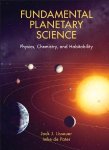 by Jack J. Lissauer and Imke de Pater
by Jack J. Lissauer and Imke de Pater
- Paperback: 450 pages
- Publisher: Cambridge University Press (July 31, 2013)
- Language: English
- ISBN-10: 052161855X
- ISBN-13: 978-0521618557
Abstract
A quantitative introduction to the Solar System and planetary systems science for advanced undergraduate students, this engaging new textbook explains the wide variety of physical, chemical, and geological processes that govern the motions and properties of planets. The authors provide an overview of our current knowledge and discuss some of the unanswered questions at the forefront of research in planetary science and astrobiology today. They combine knowledge of the Solar System and the properties of extrasolar planets with astrophysical observations of ongoing star and planet formation, offering a comprehensive model for understanding the origin of planetary systems. The book concludes with an introduction to the fundamental properties of living organisms and the relationship that life has to its host planet. With more than 200 exercises to help students learn how to apply the concepts covered, this textbook is ideal for a one-semester or two-quarter course for undergraduate students.
The Ageless Generation: How Advances in Biomedicine Will Transform the Global Economy
- Hardcover: 256 pages
- Publisher: Palgrave Macmillan (July 2, 2013)
- Language: English
- ISBN-10: 0230342205
- ISBN-13: 978-0230342200
Abstract
Over the past 20 years, the biomedical research community has been delivering hundreds of breakthroughs expected to extend human lifespan beyond thresholds imaginable today. However, much of this research has not yet been adopted into clinical practice, nor has it been widely publicized. Biomedicine will transform our society forever by allowing people to live longer and to continue working and contributing financially to the economy longer, rather than entering into retirement and draining the economy through pensions and senior healthcare. Old age will become a concept of the past, breakthroughs in regenerative medicine will continue, and an unprecedented boom to the global economy, with an influx of older able-bodied workers and consumers, will be a reality. A leading expert in aging research, author Alex Zhavoronkov provides a helicopter view on the progress science has already made, from repairing tissue damage to growing functional organs from a single cell, and illuminates the possibilities that the scientific and medical community will soon make into realities. The Ageless Generation is an engaging work that causes us to rethink our ideas of age and ability in the modern world.
SpaceX: Making Commercial Spaceflight a Reality
- Paperback: 244 pages
- Publisher: Praxis; 2013 edition (June 30, 2013)
- Language: English
- ISBN-10: 1461455138
- ISBN-13: 978-1461455134
Abstract
This first account of commercial spaceflight’s most successful venture describes the extraordinary feats of engineering and human achievement that have placed SpaceX at the forefront of the launch industry and made it the most likely candidate for transporting humans to Mars. Since its inception in 2002, SpaceX has sought to change the space launch paradigm by developing a family of launch vehicles that will ultimately reduce the cost and increase the reliability of space access tenfold. Coupled with the newly emerging market for governmental, private, and commercial space transport, this new model will re-ignite humanity’s efforts to explore and develop space.
Formed in 2002 by Elon Musk, the founder of PayPal and the Zip2 Corporation, SpaceX has already developed two state-of-the-art new launch vehicles, established an impressive launch manifest, and been awarded COTS funding by NASA to demonstrate delivery and return of cargo to the ISS.
This book describes how simplicity, low-cost, and reliability can go hand in hand, as promoted in the philosophy of SpaceX. It explains how, by eliminating the traditional layers of internal management and external sub-contractors and keeping the vast majority of manufacturing in house, SpaceX reduces its costs while accelerating decision making and delivery, controls quality, and ensures constant liaison between the design and manufacturing teams.
Human Evolutionary Genetics, 2nd Edition
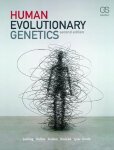 by Mark Jobling, Edward Hollox, Matthew Hurles, Toomas Kivisild, and Chris Tyler-Smith
by Mark Jobling, Edward Hollox, Matthew Hurles, Toomas Kivisild, and Chris Tyler-Smith
- Paperback: 650 pages
- Publisher: Garland Science; 2 edition (June 21, 2013)
- Language: English
- ISBN-10: 0815341482
- ISBN-13: 978-0815341482
Abstract
Now in full-color, the Second Edition of Human Evolutionary Genetics has been completely revised to cover the rapid advances in the field since publication of the highly regarded First Edition. Written for upper-level undergraduate and graduate students, it is the only textbook to integrate genetic, archaeological, and linguistic perspectives on human evolution, and to offer a genomic perspective, reflecting the shift from studies of specific regions of the genome towards comprehensive genomewide analyses of human genetic diversity.
Human Evolutionary Genetics is suitable for courses in Genetics, Evolution, and Anthropology. Those readers with a background in anthropology will find that the streamlined genetic analysis material contained in the Second Edition is more accessible. The new edition also integrates new technologies (including next-generation sequencing and genome-wide SNP typing) and new data analysis methods, including recent data on ancient genomes and their impact on our understanding of human evolution. The book also examines the subject of personal genomics and its implications.
Jobocalypse: The End of Human Jobs and How Robots will Replace Them
- Paperback: 174 pages
- Publisher: CreateSpace Independent Publishing Platform (June 21, 2013)
- Language: English
- ISBN-10: 1482701960
- ISBN-13: 978-1482701968
Abstract
Is your job in danger of getting replaced by robots?
Jobocalypse is a look at the rapidly changing face of robotics and how it will revolutionize employment and jobs over the next thirty years. Ben Way lays out the arguments in favor of and against the mechanization of our society, as well as the amazing advantages and untold risks, as we march into this ever-present future.
Each entertaining chapter covers the past, present and future of robotic technology, from sex bots to military killing drones, in an easy to understand way.
Rewire: Digital Cosmopolitans in the Age of Connection
- Hardcover: 288 pages
- Publisher: W. W. Norton & Company; 1 edition (June 17, 2013)
- Language: English
- ISBN-10: 0393082830
- ISBN-13: 978-0393082838
Abstract
A rousing call to action for those who would be citizens of the world—online and off.
We live in an age of connection, one that is accelerated by the Internet. This increasingly ubiquitous, immensely powerful technology often leads us to assume that as the number of people online grows, it inevitably leads to a smaller, more cosmopolitan world. We’ll understand more, we think. We’ll know more. We’ll engage more and share more with people from other cultures. In reality, it is easier to ship bottles of water from Fiji to Atlanta than it is to get news from Tokyo to New York.
In Rewire, media scholar and activist Ethan Zuckerman explains why the technological ability to communicate with someone does not inevitably lead to increased human connection. At the most basic level, our human tendency to “flock together” means that most of our interactions, online or off, are with a small set of people with whom we have much in common. In examining this fundamental tendency, Zuckerman draws on his own work as well as the latest research in psychology and sociology to consider technology’s role in disconnecting ourselves from the rest of the world.
For those who seek a wider picture—a picture now critical for survival in an age of global economic crises and pandemics—Zuckerman highlights the challenges, and the headway already made, in truly connecting people across cultures. From voracious xenophiles eager to explore other countries to bridge figures who are able to connect one culture to another, people are at the center of his vision for a true kind of cosmopolitanism. And it is people who will shape a new approach to existing technologies, and perhaps invent some new ones, that embrace translation, cross-cultural inspiration, and the search for new, serendipitous experiences.
Rich with Zuckerman’s personal experience and wisdom, Rewire offers a map of the social, technical, and policy innovations needed to more tightly connect the world.
The Posthuman
- Hardcover: 180 pages
- Publisher: Polity; 1 edition (June 17, 2013)
- Language: English
- ISBN-10: 0745641571
- ISBN-13: 978-0745641577
Abstract
The Posthuman offers both an introduction and major contribution to contemporary debates on the posthuman. Digital ‘second life’, genetically modified food, advanced prosthetics, robotics and reproductive technologies are familiar facets of our globally linked and technologically mediated societies. This has blurred the traditional distinction between the human and its others, exposing the non-naturalistic structure of the human. The Posthuman starts by exploring the extent to which a post-humanist move displaces the traditional humanistic unity of the subject. Rather than perceiving this situation as a loss of cognitive and moral self-mastery, Braidotti argues that the posthuman helps us make sense of our flexible and multiple identities.
Braidotti then analyzes the escalating effects of post-anthropocentric thought, which encompass not only other species, but also the sustainability of our planet as a whole. Because contemporary market economies profit from the control and commodification of all that lives, they result in hybridization, erasing categorical distinctions between the human and other species, seeds, plants, animals and bacteria. These dislocations induced by globalized cultures and economies enable a critique of anthropocentrism, but how reliable are they as indicators of a sustainable future?
The Posthuman concludes by considering the implications of these shifts for the institutional practice of the humanities. Braidotti outlines new forms of cosmopolitan neo-humanism that emerge from the spectrum of post-colonial and race studies, as well as gender analysis and environmentalism. The challenge of the posthuman condition consists in seizing the opportunities for new social bonding and community building, while pursuing sustainability and empowerment
Creation: How Science is Reinventing Life Itself
- Hardcover: 288 pages
- Publisher: Current Hardcover (June 13, 2013)
- Language: English
- ISBN-10: 1617230057
- ISBN-13: 978-1617230059
Abstract
What is life?
Humans have been asking this question for thousands of years. But as technology has advanced and our understanding of biology has deepened, the answer has evolved. For decades, scientists have been exploring the limits of nature by modifying and manipulating DNA, cells and whole organisms to create new ones that could never have existed on their own.
In Creation, science writer Adam Rutherford explains how we are now radically exceeding the boundaries of evolution and engineering entirely novel creatures—from goats that produce spider silk in their milk to bacteria that excrete diesel to genetic circuits that identify and destroy cancer cells. As strange as some of these creations may sound, this new, synthetic biology is helping scientists develop radical solutions to some of the world’s most pressing crises—from food shortages to pandemic disease to climate change—and is paving the way for inventions once relegated to science fiction.
Meanwhile, these advances are shedding new light on the biggest mystery of all—how did life begin? We know that every creature on Earth came from a single cell, sparked into existence four billion years ago. And as we come closer and closer to understanding the ancient root that connects all living things, we may finally be able to achieve a second genesis—the creation of new life where none existed before.
Creation takes us on a journey four billion years in the making—from the very first cell to the ground-breaking biological inventions that will shape the future of our planet.
Mission to Mars: My Vision for Space Exploration
 by Buzz Aldrin and Leonard David
by Buzz Aldrin and Leonard David
- Hardcover: 272 pages
- Publisher: National Geographic (May 7, 2013)
- Language: English
- ISBN-10: 1426210175
- ISBN-13: 978-1426210174
Abstract
Legendary “space statesman” Buzz Aldrin speaks out as a vital advocate for the continuing quest to push the boundaries of the universe as we know it. As a pioneering astronaut who first set foot on the moon during mankind’s first landing of Apollo 11–and as an aerospace engineer who designed an orbital rendezvous technique critical to future planetary landings–Aldrin has a vision, and in this book he plots out the path he proposes, taking humans to Mars by 2035
Radical Abundance: How a Revolution in Nanotechnology Will Change Civilization
- Hardcover: 368 pages
- Publisher: PublicAffairs; First Edition edition (May 7, 2013)
- Language: English
- ISBN-10: 1610391136
- ISBN-13: 978-1610391139
Abstract
K. Eric Drexler is the founding father of nanotechnology—the science of engineering on a molecular level. In Radical Abundance, he shows how rapid scientific progress is about to change our world. Thanks to atomically precise manufacturing, we will soon have the power to produce radically more of what people want, and at a lower cost. The result will shake the very foundations of our economy and environment.
Already, scientists have constructed prototypes for circuit boards built of millions of precisely arranged atoms. The advent of this kind of atomic precision promises to change the way we make things—cleanly, inexpensively, and on a global scale. It allows us to imagine a world where solar arrays cost no more than cardboard and aluminum foil, and laptops cost about the same.
A provocative tour of cutting edge science and its implications by the field’s founder and master, Radical Abundance offers a mind-expanding vision of a world hurtling toward an unexpected future.
The Transhumanist Reader: Classical and Contemporary Essays on the Science, Technology, and Philosophy of the Human Future
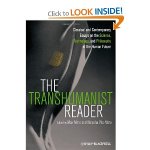 by Max More and Natasha Vita-More
by Max More and Natasha Vita-More
- Paperback: 480 pages
- Publisher: Wiley-Blackwell; 1 edition (May 6, 2013)
- Language: English
- ISBN-10: 1118334310
- ISBN-13: 978-1118334317
Abstract
he rapid pace of emerging technologies is playing an increasingly important role in overcoming fundamental human limitations. Featuring core writings by seminal thinkers in the speculative possibilities of the posthuman condition, essays address key philosophical arguments for and against human enhancement, explore the inevitability of life extension, and consider possible solutions to the growing issues of social and ethical implications and concerns. Edited by the internationally acclaimed founders of the philosophy and social movement of transhumanism, The Transhumanist Reader is an indispensable guide to our current state of knowledge of the quest to expand the frontiers of human nature.
Augmented Reality-Some Emerging Application Areas
- File Size: 7979 KB
- Print Length: 396 pages
- Simultaneous Device Usage: Unlimited
- Sold by: Amazon Digital Services, Inc.
- Language: English
- ASIN: B00CM95NG8
Abstract
Augmented Reality (AR) is a natural development from virtual reality (VR), which was developed several decades earlier. AR complements VR in many ways. Due to the advantages of the user being able to see both the real and virtual objects simultaneously, AR is far more intuitive, but it’s not completely detached from human factors and other restrictions. AR doesn’t consume as much time and effort in the applications because it’s not required to construct the entire virtual scene and the environment. In this book, several new and emerging application areas of AR are presented and divided into three sections. The first section contains applications in outdoor and mobile AR, such as construction, restoration, security and surveillance. The second section deals with AR in medical, biological, and human bodies. The third and final section contains a number of new and useful applications in daily living and learning.
The Human Race to the Future: What Could Happen-and What To Do
- Paperback: 386 pages
- Publisher: CreateSpace Independent Publishing Platform; 1 edition (April 28, 2013)
- Language: English
- ISBN-10: 1480001414
- ISBN-13: 978-1480001411
Abstract
Who doesn’t wonder about the future… what things will be like some day, how long it might take, and what we can do about it?
This book gives possible answers, spanning from the current century to nearly eternity. Imaginative yet scientifically plausible, most chapters offer a concluding section discussing actions to take in view of the predicted future scenarios. Some of these actions can be done by individuals, others by nations or other groups, and still others by the entire world.
The Nature of the Future: Dispatches from the Socialstructed World
- Hardcover: 256 pages
- Publisher: Free Press (April 9, 2013)
- Language: English
- ISBN-10: 1451641184
- ISBN-13: 978-1451641189
Abstract
A renowned futurist offers a vision of a reinvented world.
Large corporations, big governments, and other centralized organizations have long determined and dominated the way we work, access healthcare, get an education, feed ourselves, and generally go about our lives. The economist Ronald Coase, in his famous 1937 paper “The Nature of the Firm,” provided an economic explanation for this: Organizations lowered transaction costs, making the provision of goods and services cheap, efficient, and reliable. Today, this organizational advantage is rapidly disappearing. The Internet is lowering transaction costs—costs of connection, coordination, and trade—and pointing to a future that increasingly favors distributed sources and social solutions to some of our most immediate needs and our most intractable problems.
As Silicon Valley thought-leader Marina Gorbis, head of the Institute for the Future, portrays, a thriving new relationship-driven or socialstructed economy is emerging in which individuals are harnessing the powers of new technologies to join together and provide an array of products and services. Examples of this changing economy range from BioCurious, a members-run and free-to-use bio lab, to the peer-to-peer lending platform Lending Club, to the remarkable Khan Academy, a free online-teaching service. These engaged and innovative pioneers are filling gaps and doing the seemingly impossible by reinventing business, education, medicine, banking, government, and even scientific research. Based on extensive research into current trends, she travels to a socialstructed future and depicts an exciting vision of tomorrow.
The Infinite Resource: The Power of Ideas on a Finite Planet
- Hardcover: 364 pages
- Publisher: UPNE (April 9, 2013)
- Language: English
- ISBN-10: 161168255X
- ISBN-13: 978-1611682557
Abstract
limate change. Finite fossil fuels. Fresh water depletion. Rising commodity prices. Ocean acidification. Overpopulation. Deforestation. Feeding the world’s billions.
We’re beset by an array of natural resource and environmental challenges. They pose a tremendous risk to human prosperity, to world peace, and to the planet itself.
Yet, if we act, these problems are addressable. Throughout history we’ve overcome similar problems, but only when we’ve focused our energies on innovation. For the most valuable resource we have isn’t oil, water, gold, or land – it’s our stockpile of useful ideas, and our continually growing capacity to expand them.
In this remarkable book, Ramez Naam charts a course to supercharge innovation – by changing the rules of our economy – that can lead the whole world to greater wealth and human well-being, even as we dodge looming resource crunches and environmental disasters and reduce our impact on the planet.
Singularity Hypotheses: A Scientific and Philosophical Assessment
 by Amnon H. Eden, James H. Moor, Johnny H. Soraker, Eric Steinhart
by Amnon H. Eden, James H. Moor, Johnny H. Soraker, Eric Steinhart
- Hardcover: 450 pages
- Publisher: Springer; 2012 edition (April 3, 2013)
- Language: English
- ISBN-10: 3642325599
- ISBN-13: 978-3642325595
Abstract
Singularity Hypotheses: A Scientific and Philosophical Assessment offers authoritative, jargon-free essays and critical commentaries on accelerating technological progress and the notion of technological singularity. It focuses on conjectures about the intelligence explosion, transhumanism, and whole brain emulation. Recent years have seen a plethora of forecasts about the profound, disruptive impact that is likely to result from further progress in these areas. Many commentators however doubt the scientific rigor of these forecasts, rejecting them as speculative and unfounded. We therefore invited prominent computer scientists, physicists, philosophers, biologists, economists and other thinkers to assess the singularity hypotheses. Their contributions go beyond speculation, providing deep insights into the main issues and a balanced picture of the debate.
Beyond Human?: Science and the Changing Face of Humanity
- Paperback: 256 pages
- Publisher: Lion UK; 1st New edition edition (April 1, 2013)
- Language: English
- ISBN-10: 0745953964
- ISBN-13: 978-0745953960
Abstract
An exploration of what the most significant scientific advances of recent years mean for us as humans
Recent scientific advances have made it possible to do the unthinkable—clone, design one’s own babies, “genetically enhance” soldiers, and wipe out entire populations with a simple airborne chemical. Such technology means that “nature” no longer follows an inevitable course, and that our decisions have unprecedented power. This book introduces many of the most significant scientific advances of recent years including food modification; genetics and eugenics; modern medical technology; and transhumanism, or “improving” the species. Looking at the dehumanizing effects of technology, it asks us to think about what these things mean for us, arguing that new technology has developed so quickly that we haven’t had time to consider all of its ethical implications, yet not to do so is to risk our own humanity.
Hacking Your Education: Ditch the Lectures, Save Tens of Thousands, and Learn More than Your Peers Ever Will
- Paperback: 208 pages
- Publisher: Perigee Trade (March 5, 2013)
- Language: English
- ISBN-10: 0399159967
- ISBN-13: 978-0399159961
Abstract
It’s no secret that college doesn’t prepare students for the real world. Student loan debt recently eclipsed credit card debt for the first time in history and now tops one trillion dollars. And the throngs of unemployed graduates chasing the same jobs makes us wonder whether there’s a better way to “make it” in today’s marketplace.
There is—and Dale Stephens is proof of that. In Hacking Your Education, Stephens speaks to a new culture of “hackademics” who think college diplomas are antiquated. Stephens shows how he and dozens of others have hacked their education, and how you can, too. You don’t need to be a genius or especially motivated to succeed outside school. The real requirements are much simpler: curiosity, confidence, and grit.
Hacking Your Education offers valuable advice to current students as well as those who decided to skip college. Stephens teaches you to create opportunities for yourself and design your curriculum—inside or outside the classroom. Whether your dream is to travel the world, build a startup, or climb the corporate ladder, Stephens proves you can do it now, rather than waiting for life to start after “graduation” day.
Big Data: A Revolution That Will Transform How We Live, Work and Think
- Hardcover: 256 pages
- Publisher: Eamon Dolan/Houghton Mifflin Harcourt; 1 edition (March 5, 2013)
- Language: English
- ISBN-10: 9780544002692
- ISBN-13: 978-0544002692
- ASIN: 0544002695
Abstract
A revelatory exploration of the hottest trend in technology and the dramatic impact it will have on the economy, science, and society at large.
Which paint color is most likely to tell you that a used car is in good shape? How can officials identify the most dangerous New York City manholes before they explode? And how did Google searches predict the spread of the H1N1 flu outbreak?
The key to answering these questions, and many more, is big data. “Big data” refers to our burgeoning ability to crunch vast collections of information, analyze it instantly, and draw sometimes profoundly surprising conclusions from it. This emerging science can translate myriad phenomena—from the price of airline tickets to the text of millions of books—into searchable form, and uses our increasing computing power to unearth epiphanies that we never could have seen before. A revolution on par with the Internet or perhaps even the printing press, big data will change the way we think about business, health, politics, education, and innovation in the years to come. It also poses fresh threats, from the inevitable end of privacy as we know it to the prospect of being penalized for things we haven’t even done yet, based on big data’s ability to predict our future behavior.
In this brilliantly clear, often surprising work, two leading experts explain what big data is, how it will change our lives, and what we can do to protect ourselves from its hazards. Big Data is the first big book about the next big thing.
Robot Futures
- Hardcover: 160 pages
- Publisher: The MIT Press (March 1, 2013)
- Language: English
- ISBN-10: 0262018624
- ISBN-13: 978-0262018623
Abstract
With robots, we are inventing a new species that is part material and part digital. The ambition of modern robotics goes beyond copying humans, beyond the effort to make walking, talking androids that are indistinguishable from people. Future robots will have superhuman abilities in both the physical and digital realms. They will be embedded in our physical spaces, with the ability to go where we cannot, and will have minds of their own, thanks to artificial intelligence. They will be fully connected to the digital world, far better at carrying out online tasks than we are. In Robot Futures, the roboticist Illah Reza Nourbakhsh considers how we will share our world with these creatures, and how our society could change as it incorporates a race of stronger, smarter beings. Nourbakhsh imagines a future that includes adbots offering interactive custom messaging; robotic flying toys that operate by means of “gaze tracking”; robot-enabled multimodal, multicontinental telepresence; and even a way that nanorobots could allow us to assume different physical forms. Nourbakhsh follows each glimpse into the robotic future with an examination of the underlying technology and an exploration of the social consequences of the scenario.
Each chapter describes a form of technological empowerment — in some cases, empowerment run amok, with corporations and institutions amassing even more power and influence and individuals becoming unconstrained by social accountability. (Imagine the hotheaded discourse of the Internet taking physical form.) Nourbakhsh also offers a counter-vision: a robotics designed to create civic and community empowerment. His book helps us understand why that is the robot future we should try to bring about.
Erasing Death: The Science That is Rewriting the Boundaries Between Life and Death
- Hardcover: 352 pages
- Publisher: HarperOne; 1 edition (February 26, 2013)
- Language: English
- ISBN-10: 0062080601
- ISBN-13: 978-0062080608
Abstract
Erasing Death: The Science That Is Rewriting the Boundaries Between Life and Death reveals that death is not a moment in time. Death, rather, is a process—a process that can be interrupted well after it has begun. Innovative techniques have proven to be effective in revitalizing both the body and mind, but they are only employed in approximately half of the hospitals throughout the United States and Europe.
Dr. Sam Parnia, Director of the AWARE Study (AWAreness during REsuscitation) and one of the world’s leading experts on the scientific study of death and near-death experiences (NDE), presents cutting-edge research from the front lines of critical care and resuscitation medicine while also shedding light on the ultimate mystery: What happens to human consciousness during and after death? Dr. Parnia reveals how some form of “afterlife” may be uniquely ours, as evidenced by the continuation of the human mind and psyche after the brain stops functioning.
With physicians such as Dr. Parnia at the forefront, we are on the verge of discovering a new universal science of consciousness that reveals the nature of mind and a future where death is not the final defeat, but is, in fact, reversible.
Engineering the Human: Human Enhancement Between Fiction and Fascination
 by Bert Jaap Koops, Christoph H. Luthy, Annemiek Nelis, Carla Sieburgh, J.P.M. Jansen and Monika S. Schmid
by Bert Jaap Koops, Christoph H. Luthy, Annemiek Nelis, Carla Sieburgh, J.P.M. Jansen and Monika S. Schmid
- Hardcover: 205 pages
- Publisher: Springer; 2013 edition (February 13, 2013)
- Language: English
- ISBN-10: 364235095X
- ISBN-13: 978-3642350955
Abstract
The volume is collection of articles treating the topic of human improvement/enhancement from a variety of perspectives – philosophical, literary, medical, genetic, sociological, legal etc. The chapters in this volume treat not only those aspects that most immediately come to mind when one thinks of ‘human enhancement’, such as genetic engineering, cloning, artificial implants and artificial intelligence etc. Somewhat less obvious aspects include evolutionary perspectives in connection with the prolongation of the human lifespan, plastic surgery since its beginnings, and questions such as whether the distinction between ‘natural’ and ‘artificial’ can really be drawn at all and how it has been conceived across the ages, or what the legal implications are of recent developments and techniques. Many papers make links to the representation of these developments in popular culture, from Jules Verne through Aldous Huxley to the movie Gattaca, address the hopes and fears that come with them as well as the question how realistic these are. While all chapters are written by scientists at the international top of their respective fields, all are accessible to a non-specialist audience and eminently readable. We believe that they represent a state-of-the art overview of questions that are of interest to a large audience. The book thus targets a non-specialist audience with an interest in philosophical, sociological, scientific and legal issues involved in both traditional and recent matters concerning the desire of mankind to improve itself, the human body, the human mind and the human condition. It is unique in that it brings together all these aspects within a coherent and cohesive collection.
Fabricated: The New World of 3D Printing
 by Hod Lipson and Melba Kurman
by Hod Lipson and Melba Kurman
- Paperback: 280 pages
- Publisher: Wiley; 1 edition (February 11, 2013)
- Language: English
- ISBN-10: 1118350634
- ISBN-13: 978-1118350638
Abstract
Fabricated tells the story of 3D printers, humble manufacturing machines that are bursting out of the factory and into homes, businesses, schools, kitchens, hospitals, even the fashion catwalk. The magic happens when you plug a 3D printer into today’s mind-boggling digital technologies. Add to that the Internet, tiny, low cost electronic circuitry, radical advances in materials science and biotech and voila! The result is an explosion of technological and social innovation.
Fabricated provides readers with practical and imaginative insights to the question “how will 3D printing technologies change my life?” Based on hundreds of hours of research and dozens of interviews with experts from a broad range of industries, Fabricated offers readers an informative, engaging and fast-paced introduction to 3D printing now and in the future.
Living Factories: Biotechnology and the Unique Nature of Capitalism
- Hardcover: 224 pages
- Publisher: McGill-Queen’s University Press (January 17, 2013)
- Language: English
- ISBN-10: 0773540849
- ISBN-13: 978-0773540842
Abstract
Techniques of genetic engineering are changing the role of living things in the production process. From rabbits that produce human pharmaceuticals in their milk to plants that produce plastics and other building materials in their leaves, life itself is increasingly harnessed as a force of industry – a living factory. What do these cutting edge developments in biotechnology tell us about our relation to nature? Going beyond the usual focus on the ethics and risks surrounding genetically modified organisms, Kenneth Fish takes the emergence of living factories as an opportunity to revisit fundamental questions concerning the relation between human beings, technology, and the natural world. He examines the coincidence of the living factory metaphor in contemporary accounts of biotechnology and in the work of Karl Marx, who described the machine as “a mechanical monster whose body fills whole factories, and whose demonic powers …burst forth in the fast and feverish whirl of its countless working organs.” Weaving together accounts of biotechnology in the molecular- and cyber-sciences, corporate literature, and environmental sociology, Living Factories casts our contemporary relation to nature in a new light. Fish shows that living factories reveal the unique role of capitalism in infusing the forces of nature with conscious purpose subordinated to processes of commodification and accumulation, and that they give a new meaning, and urgency, to the liberation of the forces of production from the fetters of capital.
Genes, Cells and Brains: The Promethean Promises of new Biology
by Hilary Rose & Steven Rose
- Hardcover: 336 pages
- Publisher: Verso; 1 edition (January 16, 2013)
- Language: English
- ISBN-10: 1844678814
- ISBN-13: 978-1844678815
Abstract
Our fates lie in our genes and not in the stars, said James Watson, co-discoverer of the structure of DNA. But Watson could not have predicted the scale of the industry now dedicated to this new frontier. Since the launch of the multibillion-dollar Human Genome Project, the biosciences have promised miracle cures and radical new ways of understanding who we are. But where is the new world we were promised?
In Genes, Cells and Brains, feminist sociologist Hilary Rose and neuroscientist Steven Rose take on the bioscience industry and its claims. Examining the establishment of biobanks, the rivalries between public and private genesequencers, and the rise of stem cell research, they ask why the promised cornucopia of health benefits has failed to emerge and reveal the questionable enterprise that has grown out of bioethics. The human body is becoming a commodity, and the unfulfilled promises of the science behind this revolution suggest profound failings in genomics itself.
2012
Augmented Reality: An Emerging Technologies Guide to AR
 by Greg Kipper & Joseph Rampolla.
by Greg Kipper & Joseph Rampolla.
- Paperback: 208 pages
- Publisher: Syngress; 1 edition (December 3, 2012)
- Language: English
- ISBN-10: 1597497339
- ISBN-13: 978-1597497336
Abstract
With the explosive growth in mobile phone usage and rapid rise in search engine technologies over the last decade, augmented reality (AR) is poised to be one of this decade’s most disruptive technologies, as the information that is constantly flowing around us is brought into view, in real-time, through augmented reality. In this cutting-edge book, the authors outline and discuss never-before-published information about augmented reality and its capabilities. With coverage of mobile, desktop, developers, security, challenges, and gaming, this book gives you a comprehensive understanding of what augmented reality is, what it can do, what is in store for the future and most importantly: how to benefit from using AR in our lives and careers.
- Educates readers how best to use augmented reality regarless of industry
- Provides an in-depth understanding of AR and ideas ranging from new business applications to new crime fighting methods
- Includes actual examples and case studies from both private and government applications
Cybernetic Revelation: Deconstructing Artificial Intelligence
- Paperback: 772 pages
- Publisher: Post Egoism Media (November 25, 2012)
- Language: English
- ISBN-10: 0985480203
- ISBN-13: 978-0985480202
Abstract
Cybernetic Revelation explores the dual philosophical histories of deconstruction and artificial intelligence, tracing the development of concepts like the “logos” and the notion of modeling the mind technologically from pre-history to contemporary thinkers like Slavoj Žižek, Steven Pinker, Bernard Stiegler and Daniel C. Dennett. The writing is clear and accessible throughout, yet the text probes deeply into major philosophers seen by JD Casten as “conceptual engineers.”
The Human Face of Big Data
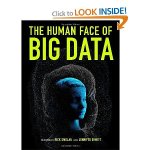 by Rick Smolan and Jennifer Erwitt
by Rick Smolan and Jennifer Erwitt
- Hardcover: 224 pages
- Publisher: Against All Odds Productions; First Edition edition (November 20, 2012)
- Language: English
- ISBN-10: 1454908270
- ISBN-13: 978-1454908272
Abstract
How to Create a Mind: The Secret of Human Thought Revealed
- Hardcover: 352 pages
- Publisher: Viking Adult; First Edition edition (November 13, 2012)
- Language: English
- ISBN-10: 9780670025299
- ISBN-13: 978-0670025299
- ASIN:
 0670025291
0670025291
Abstract
The bold futurist and bestselling author explores the limitless potential of reverse-engineering the human brain
Ray Kurzweil is arguably today’s most influential—and often controversial—futurist. In How to Create a Mind, Kurzweil presents a provocative exploration of the most important project in human-machine civilization—reverse engineering the brain to understand precisely how it works and using that knowledge to create even more intelligent machines.
Kurzweil discusses how the brain functions, how the mind emerges from the brain, and the implications of vastly increasing the powers of our intelligence in addressing the world’s problems. He thoughtfully examines emotional and moral intelligence and the origins of consciousness and envisions the radical possibilities of our merging with the intelligent technology we are creating.
Certain to be one of the most widely discussed and debated science books of the year, How to Create a Mind is sure to take its place alongside Kurzweil’s previous classics which include Fantastic Voyage: Live Long Enough to Live Forever and The Age of Spiritual Machines.
The Visioneers: How a Group of Elite Scientists Pursued Space Colonies, Nanotechnologies and a Limitless Future (2012)
- Hardcover: 366 pages
- Publisher: Princeton University Press (November 19, 2012)
- Language: English
- ISBN-10: 0691139830
- ISBN-13: 978-0691139838
Handbook of Research of Technoself: Identity in a Technological Society
- Hardcover: 1034 pages
- Publisher: IGI Global; 1 edition (October 31, 2012)
- Language: English
- ISBN-10: 1466622113
- ISBN-13: 978-1466622111
Abstract
In recent years, there has been a major push to rediscover the human side of technology across the sciences, social sciences, and humanities. With the emerging of this new study of self-identity and technology (Technoself), it holds an effort to keep pace with shaping breakthroughs in robotics, human enhancement technology, biotechnology, and more.
The Handbook of Research on Technoself: Identity in a Technological Society provides insights to better enhance the understanding of technology’s widespread intertwinement with human identity within an advancing technological society. This reference includes comprehensive coverage of the most vital issues, concepts, trends, and debates in technology and identity. It brings together an audience of researchers, scholars, students, and professionals alike.
Preparing for Life in Humanity 2.0
by Steve Fuller
| Publisher | Palgrave Pivot (October 30, 2012) |
| Language | English |
| ISBN-10 | 1137277068 |
| ISBN-13 | 978-1137277060 |
Abstract
Preparing for Life in Humanity 2.0 is a follow-up to Fuller’s widely discussed Humanity 2.0. It provides a more detailed analysis of several quite divergent futures for ‘being human’ in the 21st century. The book begins by discussing the philosophical foundations of Humanity 2.0, drawing attention to how recent changes in the conduct of science and its social relations reflect implicit changes in human self-understanding. Here three possible futures of ‘being human’ are sketched and ideologically interrelated: the ecological, the biomedical and the cybernetic. Then the book moves to Humanity 2.0’s emerging political economy, which involves the redefinition of classical political and economic concepts, such as justice and productivity. Next the book turns to Humanity 2.0’s ‘anthropology’, which means the living conditions and aspirations available to this new being. Then Humanity 2.0’s ethical horizons are considered, focusing on the normative sensibility of the ‘moral entrepreneur’, a natural risk-taker whose blurring of traditional intuitions of ‘good’ and ‘evil’ may acquire greater significance and legitimacy in the future. Finally the book concludes with a revised general education curriculum for Humanity 2.0 that gives centre stage to changing attitudes to the brain.
Robots Will Steal Your Job, But That’s Ok: How to Survive the Economic Collapse and be Happy
- Paperback: 208 pages
- Publisher: CreateSpace Independent Publishing Platform (October 23, 2012)
- Language: English
- ISBN-10: 1479380008
- ISBN-13: 978-1479380008
Abstract
You are about to become obsolete. You think you are special, unique, and that whatever it is that you are doing is impossible to replace. You are wrong. As we speak, millions of algorithms created by computer scientists are frantically running on servers all over the world, with one sole purpose: do whatever humans can do, but better.
That is the argument for a phenomenon called technological unemployment, one that is pervading modern society. But is that really the case? Or is it just a futuristic fantasy? What will become of us in the coming years, and what can we do to prevent a catastrophic collapse of society?
Robots Will Steal Your Job, But That’s OK: how to survive the economic collapse and be happy explores the impact of technological advances on our lives, what it means to be happy, and provides suggestions on how to avoid a systemic collapse.
Singularity Rising: Surviving and Thriving in a Smarter, Richer and More Dangerous World
- Paperback: 288 pages
- Publisher: BenBella Books (October 16, 2012)
- Language: English
- ISBN-10: 1936661659
- ISBN-13: 978-1936661657
Abstract
n Ray Kurzweil’s New York Times bestseller The Singularity is Near, the futurist and entrepreneur describes the Singularity, a likely future utterly different than anything we can imagine. The Singularity is triggered by the tremendous growth of human and computing intelligence that is an almost inevitable outcome of Moore’s Law. Since the book’s publication, the coming of the Singularity is now eagerly anticipated by many of the leading thinkers in Silicon Valley, from PayPal mastermind Peter Thiel to Google co-founder Larry Page. The formation of the Singularity University, and the huge popularity of the Singularity website kurzweilai.com, speak to the importance of this intellectual movement.
But what about the average person? How will the Singularity affect our daily lives—our jobs, our families, and our wealth?
Singularity Rising: Surviving and Thriving in a Smarter, Richer, and More Dangerous World focuses on the implications of a future society faced with an abundance of human and artificial intelligence. James D. Miller, an economics professor and popular speaker on the Singularity, reveals how natural selection has been increasing human intelligence over the past few thousand years and speculates on how intelligence enhancements will shape civilization over the next forty years.
Miller considers several possible scenarios in this coming singularity:
• A merger of man and machine making society fantastically wealthy and nearly immortal
• Competition with billions of cheap AIs drive human wages to almost nothing while making investors rich
• Businesses rethink investment decisions to take into account an expected future period of intense creative destruction
• Inequality drops worldwide as technologies mitigate the cognitive cost of living in impoverished environments
• Drugs designed to fight Alzheimer’s disease and keep soldiers alert on battlefields have the fortunate side effect of increasing all of their users’ IQs, which, in turn, adds a percentage points to worldwide economic growth
Singularity Rising offers predictions about the economic implications for a future of widely expanding intelligence and practical career and investment advice on flourishing on the way to the Singularity.
Future Perfect: The Case for Progress in a Networked Age
- Hardcover: 272 pages
- Publisher: Riverhead Hardcover (September 18, 2012)
- Language: English
- ISBN-10: 1594488207
- ISBN-13: 978-1594488207
Abstract
Combining the deft social analysis of Where Good Ideas Come From with the optimistic arguments of Everything Bad Is Good For You, New York Times bestselling author Steven Johnson’s Future Perfect makes the case that a new model of political change is on the rise, transforming everything from local governments to classrooms, from protest movements to health care. Johnson paints a compelling portrait of this new political worldview — influenced by the success and interconnectedness of the Internet, by peer networks, but not dependent on high-tech solutions — that breaks with the conventional categories of liberal or conservative, public vs. private thinking.
With his acclaimed gift for multi-disciplinary storytelling and big idea books, Johnson explores this new vision of progress through a series of fascinating narratives: from the “miracle on the Hudson” to the planning of the French railway system; from the battle against malnutrition in Vietnam to a mysterious outbreak of strange smells in downtown Manhattan; from underground music video artists to the invention of the Internet itself.
At a time when the conventional wisdom holds that the political system is hopelessly gridlocked with old ideas, Future Perfect makes the timely and inspiring case that progress is still possible, and that innovative strategies are on the rise. This is a hopeful, affirmative outlook for the future, from one of the most brilliant and inspiring visionaries of contemporary culture.
Unfit for the Future: The Need for Moral Enhancement (2012)
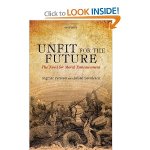 by Ingmar Persson and Julian Savulescu
by Ingmar Persson and Julian Savulescu
- Hardcover: 144 pages
- Publisher: Oxford University Press, USA (September 7, 2012)
- Language: English
- ISBN-10: 019965364X
- ISBN-13: 978-0199653645
Abstract
Unfit for the Future argues that the future of our species depends on our urgently finding ways to bring about radical enhancement of the moral aspects of our own human nature. We have rewritten our own moral agenda by the drastic changes we have made to the conditions of life on earth. Advances in technology enable us to exercise an influence that extends all over the world and far into the future. But our moral psychology lags behind and leaves us ill equipped to deal with the challenges we now face. We need to change human moral motivation so that we pay more heed not merely to the global community, but to the interests of future generations. It is unlikely that traditional methods such as moral education or social reform alone can bring this about swiftly enough to avert looming disaster, which would undermine the conditions for worthwhile life on earth forever. Persson and Savulescu maintain that it is likely that we need to explore the use of new technologies of biomedicine to change the bases of human moral motivation. They argue that there are in principle no philosophical or moral objections to such moral bioenhancement. Unfit for the Future challenges us to rethink our attitudes to our own human nature, before it is too late.
When I’m 164: The New Science of Radical Life Extension and What Happens If it Succeeds (Kindle Only, 2012)
- File Size: 586 KB
- Print Length: 66 pages
- Publisher: TED Conferences (August 16, 2012)
- Sold by: Amazon Digital Services, Inc.
- Language: English
- ASIN: B008XB16ME
Abstract
How long do you want to live, and why? These are the questions that bestselling author (‘Experimental Man’) and science writer David Ewing Duncan explores, with surprising results. ‘When I’m 164′ surveys the increasingly legitimate science of radical life extension — from genetics and regeneration to machine solutions — and considers the pluses and minuses of living to age 164, or beyond: everything from the impact on population and the cost of living to what happens to love, curiosity, and health. Concluding that anti-aging technologies will probably succeed in the next 30 to 50 years, Duncan brings us back to the age-old question posed by the Beatles in their classic song: “Will you still need me, will you still feed me, when I’m … ”
Transhumanist Dreams and Dystopian Nightmares: The Promise and Peril of Genetic Enginnering (2012)
- Hardcover: 288 pages
- Publisher: The Johns Hopkins University Press (August 6, 2012)
- Language: English
- ISBN-10: 1421406691
- ISBN-13: 978-1421406695
Abstract
Transhumanists advocate for the development and distribution of technologies that will enhance human intellectual, physical, and psychological capacities, even eliminate aging. What if the dystopian futures and transhumanist utopias found in the pages of science journals, Margaret Atwood novels, films like Gattaca, and television shows like Dark Angel are realized? What kind of world would humans have created?
Maxwell J. Mehlman considers the promises and perils of using genetic engineering in an effort to direct the future course of human evolution. He addresses scientific and ethical issues without choosing sides in the dispute between transhumanists and their challengers. However,Transhumanist Dreams and Dystopian Nightmares reveals that radical forms of genetic engineering could become a reality much sooner than many people think, and that we need to encourage risk-management efforts.
Whether scientists are dubious or optimistic about the prospects for directed evolution, they tend to agree on two things. First, however long it takes to perfect the necessary technology, it is inevitable that humans will attempt to control their evolutionary future, and second, in the process of learning how to direct evolution, we are bound to make mistakes. Our responsibility is to learn how to balance innovation with caution.
Regenesis: How Synthetic Biology Will Reinvent Nature and Ourselves (2012)
 by George M. Church and Ed Regis
by George M. Church and Ed Regis
- Hardcover: 304 pages
- Publisher: Basic Books; 1 edition (October 2, 2012)
- Language: English
- ISBN-10: 0465021751
- ISBN-13: 978-0465021758
Abstract
Imagine a future in which human beings have become immune to all viruses, in which bacteria can custom-produce everyday items, like a drinking cup, or generate enough electricity to end oil dependency. Building a house would entail no more work than planting a seed in the ground. These scenarios may seem far-fetched, but pioneering geneticist George Church and science writer Ed Regis show that synthetic biology is bringing us ever closer to making such visions a reality. In Regenesis, Church and Regis explore the possibilities—and perils—of the emerging field of synthetic biology. Synthetic biology, in which living organisms are selectively altered by modifying substantial portions of their genomes, allows for the creation of entirely new species of organisms. Until now, nature has been the exclusive arbiter of life, death, and evolution; with synthetic biology, we now have the potential to write our own biological future. Indeed, as Church and Regis show, it even enables us to revisit crucial points in the evolution of life and, through synthetic biological techniques, choose different paths from those nature originally took. Such exploits will involve far more than just microbial tinkering. Full-blown genomic engineering will make possible incredible feats, from resurrecting woolly mammoths and other extinct organisms to creating mirror life forms with a molecular structure the opposite of our own. These technologies—far from the out-of-control nightmare depicted in science fiction—have the power to improve human and animal health, increase our intelligence, enhance our memory, and even extend our life span. A breathtaking look at the potential of this world-changing technology, Regenesis is nothing less than a guide to the future of life.
Transhumanism and Society: The Social Debate Over Human Enhancement. (2012)
- Paperback: 99 pages
- Publisher: Springer; 2013 edition (August 1, 2012)
- Language: English
- ISBN-10: 9400749805
- ISBN-13: 978-9400749801
Abstract
This book provides an introductory overview to the social debate over enhancement technologies with an overview of the transhumanists’ call to bypass human nature and conservationists’ argument in defense of it. The author present this controversy as it unfolds in the contest between transhumanists proponents and conservationists, who push back with an argument to conserve human nature and to ban enhancement technologies. This book provides an overview of the key contested points and present the debate in an orderly, constructive fashion. Readers are informed about the discussion over humanism, the tension between science and religion, and the interpretation of socio-technological revolutions; and are invited to make up their own mind about one of the most challenging topics concerning the social and ethical implications of technological advancements.
Beyond Human: From Animality to Transhumanism (2012)
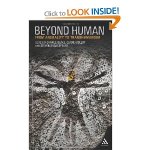 by Claire Molloy and Steven Shakespeare and Charlie Blake
by Claire Molloy and Steven Shakespeare and Charlie Blake
- Paperback: 312 pages
- Publisher: Continuum; 1 edition (May 10, 2012)
- Language: English
- ISBN-10: 1441150110
- ISBN-13: 978-1441150110
Abstract
Investigates what it means to call ourselves human beings in relation to both our distant past and our possible futures as a species, and the questions this might raise for our relationship with the myriad species with which we share the planet. Drawing on insights from zoology, theology, cultural studies and aesthetics, an international line-up of contributors explore such topics as our origins as reflected in early cave art in the upper Palaeolithic through to our prospects at the forefront of contemporary biotechnology. In the process, the book positions ; in readiness for what many have characterized as our transhuman or posthuman future. For if our status as rational animals or "animals that think" has traditionally distinguished us as apparently superior to other species, this distinction has become increasingly problematic. It has come to be seen as based on skills and technologies that do not distinguish us so much as position us as transitional animals
Abundance: The Future Is Better Than You Think (2012)
 by Peter H. Diamandis and Steven Kotler
by Peter H. Diamandis and Steven Kotler
- Hardcover: 400 pages
- Publisher: Free Press; Fifth Impression edition (February 21, 2012)
- Language: English
- ISBN-10: 1451614217
- ISBN-13: 978-1451614213
Abstract
We will soon be able to meet and exceed the basic needs of every man, woman and child on the planet. Abundance for all is within our grasp. This bold, contrarian view, backed up by exhaustive research, introduces our near-term future, where exponentially growing technologies and three other powerful forces are conspiring to better the lives of billions. An antidote to pessimism by tech entrepreneur turned philanthropist, Peter H. Diamandis and award-winning science writer Steven Kotler.
Since the dawn of humanity, a privileged few have lived in stark contrast to the hardscrabble majority. Conventional wisdom says this gap cannot be closed. But it is closing—fast. The authors document how four forces—exponential technologies, the DIY innovator, the Technophilanthropist, and the Rising Billion—are conspiring to solve our biggest problems. Abundance establishes hard targets for change and lays out a strategic roadmap for governments, industry and entrepreneurs, giving us plenty of reason for optimism.
Examining human need by category—water, food, energy, healthcare, education, freedom—Diamandis and Kotler introduce dozens of innovators making great strides in each area: Larry Page, Steven Hawking, Dean Kamen, Daniel Kahneman, Elon Musk, Bill Joy, Stewart Brand, Jeff Skoll, Ray Kurzweil, Ratan Tata, Craig Venter, among many, many others.
The Genome Generation (2012)
- Paperback: 256 pages
- Publisher: Melbourne University Publishing (April 1, 2012)
- Language: English
- ISBN-10: 0522856470
- ISBN-13: 978-0522856477
Abstract
The year 2001 marked the moment when scientists first read the 3 billion letters of DNA that make up the human genome. This breakthrough begged questions such as What have we learned about evolution? How has it changed the way we practice medicine, grow crops, and breed livestock? and Is the genomic revolution an overhyped flop? Answering these and many other queries, this account covers revolutionary genetic developments in areas as diverse as medicine, agriculture, and evolution. From Botswana to Boston and from Australia to Mexico, the contributors to this work reveal what it means to be part of the genome generation.
The Epigenetics Revolution: How Modern Biology Is Rewriting Our Understanding of Genetics, Disease, and Inheritance (2012)
- Hardcover: 352 pages
- Publisher: Columbia University Press; 1 edition (March 6, 2012)
- Language: English
- ISBN-10: 9780231161169
- ISBN-13: 978-0231161169
- ASIN: 0231161166
Abstract
Epigenetics can potentially revolutionize our understanding of the structure and behavior of biological life on Earth. It explains why mapping an organism’s genetic code is not enough to determine how it develops or acts and shows how nurture combines with nature to engineer biological diversity. Surveying the twenty-year history of the field while also highlighting its latest findings and innovations, this volume provides a readily understandable introduction to the foundations of epigenetics.
Nessa Carey, a leading epigenetics researcher, connects the field’s arguments to such diverse phenomena as how ants and queen bees control their colonies; why tortoiseshell cats are always female; why some plants need cold weather before they can flower; and how our bodies age and develop disease. Reaching beyond biology, epigenetics now informs work on drug addiction, the long-term effects of famine, and the physical and psychological consequences of childhood trauma. Carey concludes with a discussion of the future directions for this research and its ability to improve human health and well-being.
Beyond Boundaries (2012)
- Paperback: 368 pages
- Publisher: St. Martin’s Griffin; Reprint edition (February 28, 2012)
- Language: English
- ISBN-10: 1250002613
- ASIN: B009F7NF6K
Abstract
Imagine living in a world where people use their computers, drive their cars, and communicate with one another simply by thinking. In this stunning and inspiring work, Duke University neuroscientist Miguel Nicolelis shares his revolutionary insights into how the brain creates thought and the human sense of self—and how this might be augmented by machines, so that the entire universe will be within our reach.
Beyond Boundaries draws on Nicolelis’s ground-breaking research with monkeys that he taught to control the movements of a robot located halfway around the globe by using brain signals alone. Nicolelis’s work with primates has uncovered a new method for capturing brain function—by recording rich neuronal symphonies rather than the activity of single neurons. His lab is now paving the way for a new treatment for Parkinson’s, silk-thin exoskeletons to grant mobility to the paralyzed, and breathtaking leaps in space exploration, global communication, manufacturing, and more.
Beyond Boundaries promises to reshape our concept of the technological future, to a world filled with promise and hope.
Race Against the Machine: How the Digital Revolution is Accelerating Innovation, Driving Productivity, and Irreversibly Transforming Employment and the Economy
 by Erik Brynjolfsson and Andrew McAfee
by Erik Brynjolfsson and Andrew McAfee
- Paperback: 98 pages
- Publisher: Digital Frontier Press (January 23, 2012)
- Language: English
- ISBN-10: 0984725113
- ISBN-13: 978-0984725113
Abstract
Why has median income stopped rising in the US?
2011
Humanity 2.0: What it means to be Human Past, Present and Future
by Steve Fuller
- Paperback: 280 pages
- Publisher: Palgrave Macmillan (November 22, 2011)
- Language: English
- ISBN-10: 0230233430
- ISBN-13: 978-0230233430
Abstract
Social thinkers in all fields are faced with one unavoidable question: what does it mean to be ‘human’ in the 21st century? As definitions between what is ‘animal’ and what is ‘human’ break down, and as emerging technologies such as artificial intelligence and nano- and bio- technologies develop, accepted notions of humanity are rapidly evolving.
Humanity 2.0 is an ambitious and groundbreaking book, offering a sweeping overview of key historical, philosophical and theological moments that have shaped our understandings of humanity. Tackling head on the twin taboos that have always hovered over the scientific study of humanity – race and religion – Steve Fuller argues thar far from disappearing, they are being reinvented.
Fuller argues that these new developments will force us to decide which features of our current way of life – not least our bodies – are truly needed to remain human, and concludes with a consideration of these changes for ethical and social values more broadly.
Beyond Humanity: The Ethics of Biomedical Enhancement (2011)
- Paperback: 304 pages
- Publisher: Oxford University Press, USA; Reprint edition (February 8, 2011)
- Language: English
- ISBN-10: 0199671494
- ISBN-13: 978-0199671496
Abstract
Biotechnologies already on the horizon will enable us to be smarter, have better memories, be stronger and quicker, have more stamina, live longer, be more resistant to diseases, and enjoy richer emotional lives. To some of us, these prospects are heartening; to others, they are dreadful. In Beyond Humanity a leading philosopher offers a powerful and controversial exploration of urgent ethical issues concerning human enhancement. These raise enduring questions about what it is to be human, about individuality, about our relationship to nature, and about what sort of society we should strive to have. Allen E. Buchanan urges that the debate about enhancement needs to be informed by a proper understanding of evolutionary biology, which has discredited the simplistic conceptions of human nature used by many opponents of enhancement. He argues that there are powerful reasons for us to embark on the enhancement enterprise, and no objections to enhancement that are sufficient to outweigh them.
H+/-: Transhumanism and Its Critics (2011)
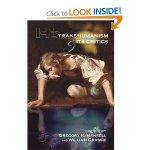 by Gregory R. Hansell and William Grassie
by Gregory R. Hansell and William Grassie
- Paperback: 278 pages
- Publisher: Metanexus Institute (January 25, 2011)
- Language: English
- ISBN-10: 1456815652
- ISBN-13: 978-1456815653
Abstract
Suppose in the near future humans are able to reverse the aging process. Imagine a world in which we are free from the ravages of mental disease, physical decrepitude, and natural death. Consider what life would be like if–through applied sciences like genomics, robotics, nanotechnology, and artificial intelligence–we were able to dramatically increase our intellectual capacity and control
our emotional and mental states. Envision parents choosing the “”nature”” of their children before they are born. This is the future celebrated by the transhumanists. They claim that the scientific know-how is not far off. As a philosophical proposition, transhumanism is as an outgrowth of the Enlightenment and secular humanism.
It is an increasingly influential worldview that is gaining momentum and garnering criticism. Transhumanism has been called “” the
world’s most dangerous idea.”” Previously imaginable only in the realm of science fiction, the reality of transhumanism may soon
be upon us.
Humanity: Transhumanism and Its Critics brings together sixteen of the foremost advocates and critics of transhumanism to debate the promises and the perils of bioengineering an improved humanity. As it turns out, transhumanism is a catalyst for profound philosophical and theological inquiry. If the idea of a fixed human nature no longer applied, can we still speak of humane dignities and essential human rights? Should we try to limit the development of certain technologies? Is it even possible? Are the new sciences and technologies hailed by transhumanists just wishful thinking? And which utopic and dystopic visions have the power to motivate us to build a more wholesome, just, and sustainable tomorrow? This volume does much to advance critical dialogue on the future course of our species and our planet.
The Techno-Human Condition (2011)
 by Braden R. Allenby and Daniel Sarewitz
by Braden R. Allenby and Daniel Sarewitz
- Hardcover: 240 pages
- Publisher: The MIT Press (April 22, 2011)
- Language: English
- ISBN-10: 0262015692
- ISBN-13: 978-0262015691
Abstract
In The Techno-Human Condition, Braden Allenby and Daniel Sarewitz explore what it means to be human in an era of incomprehensible technological complexity and change. They argue that if we are to have any prospect of managing that complexity, we will need to escape the shackles of current assumptions about rationality, progress, and certainty, even as we maintain a commitment to fundamental human values.Humans have been co-evolving with their technologies since the dawn of prehistory. What is different now is that we have moved beyond external technological interventions to transform ourselves from the inside out — even as we also remake the Earth system itself. Coping with this new reality, say Allenby and Sarewitz, means liberating ourselves from such categories as “human,” “technological,” and “natural” to embrace a new techno-human relationship.
Forbidden Gates: How Genetics, Robotics, Artificial Intelligence, Synthetic Biology and Human Enhancement Herald the Dawn Of Techno-Dimensional Spiritual Warefare (2011)
 by Thomas R. Horn and Nita F. Horn
by Thomas R. Horn and Nita F. Horn
- Paperback: 350 pages
- Publisher: Defender (January 1, 2011)
- Language: English
- ISBN-10: 0984061193
- ISBN-13: 978-0984061198
Abstract
While Forbidden Gates includes fresh insights for traditional, tried and true methods of overcoming darkness, it also unveils for the first time how breakthrough advances in science, technology, and philosophy—including cybernetics, bio-engineering, nanotechnology, machine intelligence, synthetic biology, and transhumanism—will combine to create mind-boggling game-changes to everything you have ever known about spiritual warfare.
How so?
In recent years, astonishing technological developments have pushed the frontiers of humanity toward far-reaching morphological transformation that promises in the very near future to redefine what it means to be human. An international, intellectual and fast-growing cultural movement known as transhumanism intends the use of genetics, robotics, artificial intelligence and nanotechnology (GRIN technologies) as tools that will radically redesign our minds, our memories, our physiology, our offspring, and even perhaps, as Joel Garreau in his bestselling book Radical Evolution claims, our very souls. The technological, cultural, and metaphysical shift now under way unapologetically forecasts a future dominated by this new species of unrecognizably superior humans, and applications under study now to make this dream reality are being funded by thousands of government and private research facilities around the world. As the reader will learn, this includes among other things rewriting human DNA and combining men with beasts, a fact that some university studies and transhumanists believe will not only alter our bodies and souls but could ultimately open a door to contact with unseen intelligence.
As a result, new modes of perception between things visible and invisible are expected to challenge the Church in ways that are historically and theologically unprecedented. Without comprehending what is quickly approaching in related disciplines of research and development, vast numbers of believers could be paralyzed by the most fantastic—and most far reaching—supernatural implications. The destiny of each individual—as well as the future of their family—will depend on their knowledge of the new paradigm and their preparedness to face it head on.
Human Enhancement (2011)
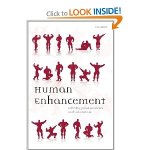 by Julian Savulescu and Nick Bostrom
by Julian Savulescu and Nick Bostrom
- Paperback: 432 pages
- Publisher: Oxford University Press, USA; Reprint edition (January 7, 2011)
- Language: English
- ISBN-10: 0199594961
- ISBN-13: 978-0199594962
Abstract
To what extent should we use technology to try to make better human beings? Because of the remarkable advances in biomedical science, we must now find an answer to this question.
Human enhancement aims to increase human capacities above normal levels. Many forms of human enhancement are already in use. Many students and academics take cognition enhancing drugs to get a competitive edge. Some top athletes boost their performance with legal and illegal substances. Many an office worker begins each day with a dose of caffeine. This is only the beginning. As science and technology advance further, it will become increasingly possible to enhance basic human capacities to increase or modulate cognition, mood, personality, and physical performance, and to control the biological processes underlying normal aging. Some have suggested that such advances would take us beyond the bounds of human nature.
These trends, and these dramatic prospects, raise profound ethical questions. They have generated intense public debate and have become a central topic of discussion within practical ethics. Should we side with bioconservatives, and forgo the use of any biomedical interventions aimed at enhancing human capacities? Should we side with transhumanists and embrace the new opportunities? Or should we perhaps plot some middle course?
Human Enhancement presents the latest moves in this crucial debate: original contributions from many of the world’s leading ethicists and moral thinkers, representing a wide range of perspectives, advocates and sceptics, enthusiasts and moderates. These are the arguments that will determine how humanity develops in the near future.
Nanotechnology : public perception and risk communication (2011)
- Paperback: 202 pages
- Publisher: CRC Press; 1 edition (September 12, 2011)
- Language: English
- ISBN-10: 1439826838
- ISBN-13: 978-1439826836
Abstract
From nuclear power to gene therapy to the automobile, history shows that it is useful to encourage and facilitate public discussion about new technologies and their potential dangers. Part of the series Perspectives in Nanotechnology, Nanotechnology and the Public: Risk Perception and Risk Communication assesses results from focus groups, interviews, and other resources to provide a more nuanced understanding of how non-experts perceive nanotechnology and what they expect from it.
Includes a series of special essays by social scientists and humanities scholars who have studied nanotechnology and society from different perspectives
Assessing how “ordinary” people form opinions about new technologies and their adoption, this book addresses the role of media messages and pre-existing values in this process, as well as how risks can become either amplified or weakened along the way as a result of social mechanisms. Using solid theory and research to back presented concepts on risk perception and communication, the author discusses the potential for using informed consent, labels, and other types of consumer warnings that have proved to be effective in areas other than nano.
An in-depth investigation into the concept of mass communication practices, this book explores the paradox of why, despite its appeal and promise, public engagement has had only limited success in the dialogue on nanotechnology. Aimed at finding solutions, the book’s resulting conclusions are considered in the context of broader issues. These include how society makes up its collective mind about technology adoption and all the profound questions this raises, in terms of democratic theory.
Nanotechnology and Sustainable Development (2011)
- Hardcover: 198 pages
- Publisher: Routledge; 1 edition (October 6, 2011)
- Language: English
- ISBN-10: 0415891825
- ISBN-13: 978-0415891820
Abstract
Public institutions, academic researchers and financial analysts among others hail nanotechnologies as one of the most promising sectors of social and economic development. Calculations predict that it will become a trillion euro industry by 2015 and that it will bring about economic change of at least the same magnitude as the industrial revolution. Nanotechnology is recent, younger by some thirty years than biotechnology, but it appears at a point in time in human history where there is a convergence between the globalization of access to information and increasing awareness of the importance of sustainable development. Nanotechnology and Sustainable Development explores the ways in which this convergence leads to a change in the management of innovation – and ultimately a reshaping of technological democracy. The scope of the study is global, with a particular focus on Europe and the United States, utilizing several case studies of stakeholders including entrepreneurs, commentators, end users, scientists, and policy makers.
The Nanotechnology Challenge: Creating Legal Institutions for Uncertain Risks (2011)
- Hardcover: 438 pages
- Publisher: Cambridge University Press (November 14, 2011)
- Language: English
- ISBN-10: 0521767385
- ISBN-13: 978-0521767385
Abstract
2010
Transcend: Nine Steps to Living Well Forever
 by Ray Kurzweil and Terry Grossman
by Ray Kurzweil and Terry Grossman
- Paperback: 480 pages
- Publisher: Rodale Books; 1 edition (December 21, 2010)
- Language: English
- ISBN-10: 1605292079
- ISBN-13: 978-1605292076
Abstract
long enough to live forever.
Enhancing Evolution: The Ethical Case for Making Better People (2010)
- Paperback: 242 pages
- Publisher: Princeton University Press (September 27, 2010)
- Language: English
- ISBN-10: 0691148163
- ISBN-13: 978-0691148168
Abstract
In Enhancing Evolution, leading bioethicist John Harris dismantles objections to genetic engineering, stem-cell research, designer babies, and cloning and makes an ethical case for biotechnology that is both forthright and rigorous. Human enhancement, Harris argues, is a good thing–good morally, good for individuals, good as social policy, and good for a genetic heritage that needs serious improvement. Enhancing Evolutiondefends biotechnological interventions that could allow us to live longer, healthier, and even happier lives by, for example, providing us with immunity from cancer and HIV/AIDS. Further, Harris champions the possibility of influencing the very course of evolution to give us increased mental and physical powers–from reasoning, concentration, and memory to strength, stamina, and reaction speed. Indeed, he says, it’s not only morally defensible to enhance ourselves; in some cases, it’s morally obligatory.
In a new preface, Harris offers a glimpse at the new science and technology to come, equipping readers with the knowledge to assess the ethics and policy dimensions of future forms of human enhancement.
More Than Human: Embracing the Promise of Biological Enhancement (2010)
- Paperback: 230 pages
- Publisher: lulu.com (August 9, 2010)
- Language: English
- ISBN-10: 0557582334
- ISBN-13: 978-0557582334
Abstract
What if we could alter our genes to cure Alzheimer’s and Parkinson’s?
What if we could halt or even reverse the human aging process?
What if we could communicate with each other simply by thinking about it?These questions were once the stuff of science fiction. Today, advances in biotechnology have shown that they’re plausible, even likely to be accomplished in the near future. In labs around the world, researchers looking for ways to help the sick and injured have stumbled onto techniques that enhance healthy animals–making them stronger, faster, smarter, and longer-lived–in some cases, even connecting their minds to robots and computers across the Internet.
2009
Nanoethics : big ethical issues with small technology (2009)
- Paperback: 248 pages
- Publisher: Bloomsbury Academic; 1 edition (December 15, 2009)
- Language: English
- ISBN-10: 1847063950
- ISBN-13: 978-1847063953
Abstract
Nanotechnology manipulates matter at the atomic level. It leads to innovative processes and products that are revolutionizing many areas of modern life. Huge amounts of public funds are being invested in the science, yet the public has little understanding of the technology or its ethical implications. Indeed, the ethical, social, and political dimensions of nanotechnology are only beginning to receive the attention they require — outside of science fiction contexts. Surveillance devices may become so small that they are practically invisible to the naked eye, raising concerns about privacy. Nanomedicine may lead to the development of new diagnostic and therapeutic devices, yet anxieties have been raised about the impact of “nanobots” circulating in our bodies. Military applications, or misuses, of nanotechnology raise other concerns. This book explores in an accessible and informative way how nanotechnology is likely to impact the lives of ordinary people in the coming years and why ethical reflection on nanotechnology is needed now.
Neuroethics: Challenges for the 21st Century2007
- Paperback: 364 pages
- Publisher: Cambridge University Press; 1 edition (August 13, 2007)
- Language: English
- ISBN-10: 0521687268
- ISBN-13: 978-0521687263
Abstract
Neuroscience has dramatically increased understanding of how mental states and processes are realized by the brain, thus opening doors for treating the multitude of ways in which minds become dysfunctional. This book explores questions such as when is it permissible to alter a person’s memories, influence personality traits or read minds? What can neuroscience tell us about free will, self-control, self-deception and the foundations of morality? The view of neuroethics offered here argues that many of our new powers to read ,alter and control minds are not entirely unparalleled with older ones. They have, however, expanded to include almost all our social, political and ethical decisions. Written primarily for graduate students, this book will appeal to anyone with an interest in the more philosophical and ethical aspects of the neurosciences.
Beyond AI: Creating the Conscience of the Machine
- Hardcover: 408 pages
- Publisher: Prometheus Books (May 1, 2007)
- Language: English
- ISBN-10: 1591025117
- ISBN-13: 978-1591025115
Abstract
Artificial intelligence (AI) is now advancing at such a rapid clip that it has the potential to transform our world in ways both exciting and disturbing. Computers have already been designed that are capable of driving cars, playing soccer, and finding and organizing information on the Web in ways that no human could. With each new gain in processing power, will scientists soon be able to create supercomputers that can read a newspaper with understanding, or write a news story, or create novels, or even formulate laws? And if machine intelligence advances beyond human intelligence, will we need to start talking about a computer’s intentions?
These are some of the questions discussed by computer scientist J. Storrs Hall in this fascinating layperson’s guide to the latest developments in artificial intelligence. Drawing on a thirty-year career in artificial intelligence and computer science, Hall reviews the history of AI, discussing some of the major roadblocks that the field has recently overcome, and predicting the probable achievements in the near future. There is new excitement in the field over the amazing capabilities of the latest robots and renewed optimism that achieving human-level intelligence is a reachable goal.
But what will this mean for society and the relations between technology and human beings? Soon ethical concerns will arise and programmers will need to begin thinking about the computer counterparts of moral codes and how ethical interactions between humans and their machines will eventually affect society as a whole.
Weaving disparate threads together in an enlightening manner from cybernetics, computer science, psychology, philosophy of mind, neurophysiology, game theory, and economics, Hall provides an intriguing glimpse into the astonishing possibilities and dilemmas on the horizon.
2006
Radical Evolution: The Promise and Peril of Enhancing Our Minds, Our Minds–And What It Means to Be Human (2006).
- Paperback: 400 pages
- Publisher: Broadway (May 9, 2006)
- Language: English
- ISBN-10: 0767915038
- ISBN-13: 978-0767915038
Abstract
Taking us behind the scenes with today’s foremost researchers and pioneers, bestselling author Joel Garreau shows that we are at a turning point in history. At this moment we are engineering the next stage of human evolution. Through advances in genetic, robotic, information, and nanotechnologies, we are altering our minds, our memories, our metabolisms, our personalities, our progeny–and perhaps our very souls. Radical Evolution reveals that the powers of our comic-book superheroes already exist, or are in development in hospitals, labs, and research facilities around the country–from the revved-up reflexes and speed of Spider-Man and Superman, to the enhanced mental acuity and memory capabilities of an advanced species. Over the next fifteen years, Garreau makes clear in this New York Times Book Club premiere selection, these enhancements will become part of our everyday lives. Where will they lead us? To heaven–where technology’s promise to make us smarter, vanquish illness, and extend our lives is the answer to our prayers? Or, as some argue, to hell–where unrestrained technology brings about the ultimate destruction of our species?
The Singularity is Near: When Humans Transcend Biology (2006)
- Paperback: 672 pages
- Publisher: Penguin Books (September 26, 2006)
- Language: English
- ISBN-10: 0143037889
- ISBN-13: 978-0143037880
Abstract
For over three decades, Ray Kurzweil has been one of the most respected and provocative advocates of the role of technology in our future. In his classic The Age of Spiritual Machines, he argued that computers would soon rival the full range of human intelligence at its best. Now he examines the next step in this inexorable evolutionary process: the union of human and machine, in which the knowledge and skills embedded in our brains will be combined with the vastly greater capacity, speed, and knowledge-sharing ability of our creations.
2005
Liberation Biology: The Scientific and Moral Case for the Biotech Revolution (2005)
- Hardcover: 332 pages
- Publisher: Prometheus Books; 1st ptg edition (January 1, 2005)
- Language: English
- ISBN-10: 1591022274
- ISBN-13: 978-1591022275
Abstract
The 21st century will undoubtedly witness unprecedented advances in understanding the mechanisms of the human body and in developing biotechnology. With the mapping of the human genome, the pace of discovery is now on the fast track. By the middle of the century we can expect that the rapid progress in biology and biotechnology will utterly transform human life. What was once the stuff of science fiction may now be within reach in the not-too-distant future: 20-to-40-year leaps in average life spans, enhanced human bodies, drugs and therapies to boost memory and speed up mental processing, and a genetic science that allows parents to ensure that their children will have stronger immune systems, more athletic bodies, and cleverer brains. Even the prospect of human immortality beckons.
Such scenarios excite many people and frighten or appall many others. Already biotechnology opponents are organizing political movements aimed at restricting scientific research, banning the development and commercialization of various products and technologies, and limiting citizens’ access to the fruits of the biotech revolution.
In this forward-looking book Ronald Bailey, science writer for Reason magazine, argues that the coming biotechnology revolution, far from endangering human dignity, will liberate human beings to achieve their full potentials by enabling more of us to live flourishing lives free of disease, disability, and the threat of early death. Bailey covers the full range of the coming biotechnology breakthroughs, from stem-cell research to third-world farming, from brain-enhancing neuropharmaceuticals to designer babies. Against critics of these trends, who forecast the nightmare society of Huxley’s Brave New World, Bailey persuasively shows in lucid and well-argued prose that the health, safety, and ethical concerns raised by worried citizens and policymakers are misplaced.
Liberation Biology makes a positive, optimistic, and convincing case that the biotechnology revolution will improve our lives and the future of our children, while preserving and enhancing the natural environment.
2004
Liberal Eugenics: In Defence of Human Enhancement (2004)
- Paperback: 216 pages
- Publisher: Wiley-Blackwell; 1 edition (November 30, 2004)
- Language: English
- ISBN-10: 1405123907
- ISBN-13: 978-1405123907
Abstract
In this provocative book, philosopher Nicholas Agar defends the idea that parents should be allowed to enhance their children’s characteristics.
- Gets away from fears of a Huxleyan ‘Brave New World’ or a return to the fascist eugenics of the past
- Written from a philosophically and scientifically informed point of view
- Considers real contemporary cases of parents choosing what kind of child to have
- Uses ‘moral images’ as a way to get readers with no background in philosophy to think about moral dilemmas
- Provides an authoritative account of the science involved, making the book suitable for readers with no knowledge of genetics
- Creates a moral framework for assessing all new technologies
2003
Redesigning Humans: Choosing Our Genes, Changing Our Future (2003)
- Paperback: 296 pages
- Publisher: Mariner Books (April 11, 2003)
- Language: English
- ISBN-10: 0618340831
- ISBN-13: 978-0618340835
Abstract
A groundbreaking work, Redesigning Humans tackles the controversial subject of engineering the human germline — the process of permanently altering the genetic code of an individual so that the changes are passed on to the offspring. Gregory Stock, an expert on the implications of recent advances in reproductive biology, has glimpsed the inevitable future of biomedical engineering. Within decades, Stock asserts, technological advances will bring meaningful changes to our offspring; this scientific revolution promises to fundamentally alter the human species. With recent findings presented in a new afterword, Stock’s provocative assessment cuts through the debate to envision an age of radical biotechnological advancement and unprecedented human choice.
2001
From Chance to Choice: Genetics and Justice (2001)
 by Allen Buchanan, Dan W. Brock, Norman Daniels, and Daniel Wilker
by Allen Buchanan, Dan W. Brock, Norman Daniels, and Daniel Wilker
- Paperback: 414 pages
- Publisher: Cambridge University Press (November 12, 2001)
- Language: English
- ISBN-10: 0521669774
- ISBN-13: 978-0521669771
Abstract
Written by four internationally renowned bioethicists, From Chance to Choice is the first systematic treatment of the fundamental ethical issues underlying the application of genetic technologies to human beings. Probing the implications of the remarkable advances in genetics, the authors ask how should these affect our understanding of distributive justice, equality of opportunity, the rights and obligations as parents, the meaning of disability, and the role of the concept of human nature in ethical theory and practice. The book offers a historical context to contemporary debate over the use of these technologies by examining the eugenics movement of the late 19th and early 20th centuries. In addition, appendices explain the nature of genetic causation, gene-environment interaction, and expose widespread misconceptions of genetic determinism, as well as outlining the nature of the ethical analysis used in the book. The questions raised in this book will be of interest to any reflective reader concerned about science and society and the rapid development of biotechnology, as well as to professionals in such areas as philosophy, bioethics, medical ethics, health management, law, and political science
Via Jameson Rohrer
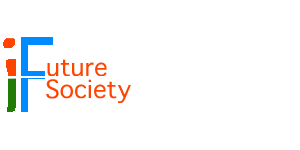

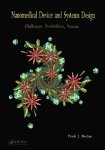






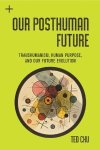

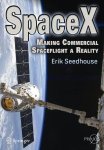


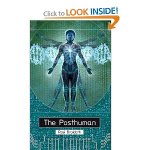



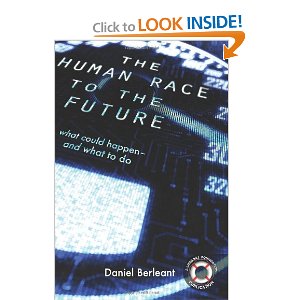
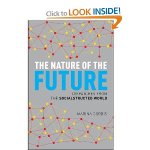
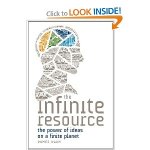
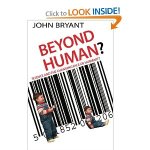

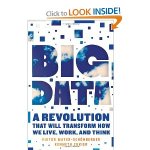
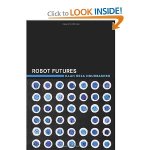




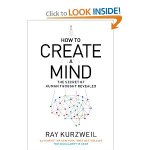
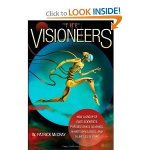
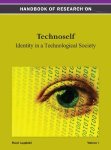

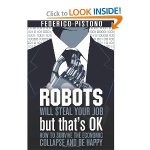
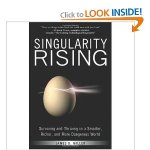
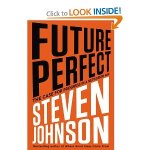





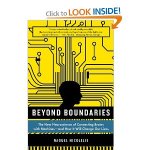
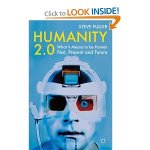
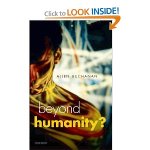
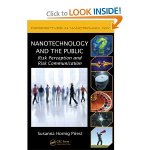
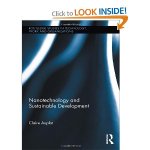

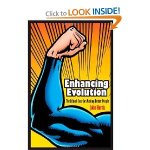
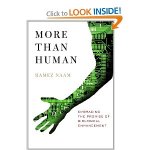

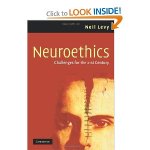
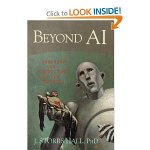

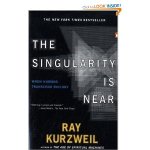


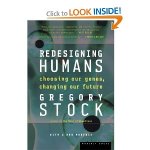












Great collection!
Thought provoking lines from”The Singularity is Near” by Ray Kurzweil: The first half of the twenty-first century will be characterized by three overlapping revolutions – in Genetics, Nanotechnology, and Robotics. These will usher in the beginning of Singularity. We are in the early stages of the “G” revolution today…The “N” revolution will enable us to redesign and rebuild – molecule by molecule – our bodies and brains and the world with which we interact, going far beyond the limitations of biology. The most powerful impending revolution is “R”: human-level robots with their intelligence derived from our own but redesigned to far exceed human capabilities. Ray Kurzweil adds: Nanotechnology will facilitate capturing renewable energy sources such as sunlight. We could meet all of our projected energy needs of thirty trillion watts in 2030 with solar power if we captured only 0.03 percent (three ten-thousandths) of the sun’s energy as it hit the Earth. This will be feasible with extremely inexpensive, lightweight, and efficient nanoengineered solar panels together with nano-fuel cells to store and distribute the captured energy…
Nanotechnology promises the tool to rebuild the physical world – our bodies and brains included – molecular fragment by molecular fragment, potentially atom by atom…
Of the three primary revolutions underlying the Singularity (G,N, and R), the most profound is R, which refers to the creation of nonbiological intelligence that exceeds that of enhanced humans. A more intelligent process will inherently outcompete one that is less intelligent, making intelligence the most powerful force in the universe.
While the R in GNR stands for robotics, the real issue involved here is strong AI (artificial intelligence that exceeds human intelligence). The standard reason for emphasizing robotics in this formulation is that intelligence needs an embodiment, a physical presence, to affect the world…
I read some of the books by Damien Francis Broderick including “The Spike” (where he investigate the technological Singularity in detail) and his science fiction novel “The Judas Mandala” (where he referred the term “virtual reality,”). If you want to know what the future has in store for the human race, Broderick’s ‘The Spike’ is the book to start with… when the curves of research and development in artificial intelligence, molecular biology, and robotics all converge… At the point of singularity referred to as The Spike, the cumulative changes on all fronts will affect the existence of humanity as a species and cause a leap of evolution into a new state of being.’
“Emperor’s New Mind” by Roger Penrose is another great book in which he deals with ‘AI’ in one chapter.
Best of luck for ‘India Future Society’!
~ Raghavan Nambiar
I think a visualized display can be enhanced then only a effortless text, if things are defined in graphics one can effortlessly understand these.
Excellent post. I’m facing a few of these issues as well..
This post is a work in progress, but will increase with time and brevity.
Excellent site you’ve got here.. It’s hard to find good quality writing like yours nowadays.
I truly appreciate individuals like you! Take care!!
Thank you! I am working hard to ensure this list continually gets updated!
hey. you have a pretty good post there mate.
google…
Google http://news.google.com…
hey there! , I adore ones writing very a lot! share many of us talk extra about your article upon Google? I personally call for a expert for this house to unravel this dilemma. Possibly that is definitely you actually! Writing about ahead of time to determine you actually.
A person always make very seriously content I might state. That’s the very first time that I used your internet site and therefore considerably? My partner and i amazed together with the study you have made to create this actual send incredible. Superb occupation!
6000mah行動電源…
Hello there! This really is my 1st comment here so I just needed to provide a quick shout out and tell you I truly appreciate studying your blog posts. Are you able to suggest every other blogs/websites/forums that go over the same subjects? Thanks a g…